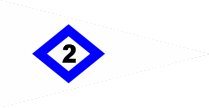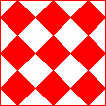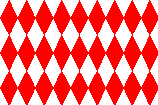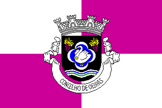![[logo flag]](../images/v/vxt-d586.gif)
![[logo flag]](../images/v/vxt-d1797.gif)
![[logo flag]](../images/v/vxt-d1798.gif)
![[logo flag]](../images/v/vxt-d2015.gif)
Flag of the Portuguese Railway Company (fotw); Flag of
Sealink, UK (fotw);
Flag of The Aaland Islands Post office (fotw);
Former Flag of Aino, Japan (Tomislav Šipek)
Please note that this term is often misapplied, and care should be taken to ensure that the device being described is not a seal, badge or emblem as referenced above.
![[Nebraska]](../images/v/vxt-d1689.gif)
![[Kansas]](../images/v/vxt-d2505.gif)
![[Kentuchy]](../images/v/vxt-d2506.gif)
![[Michigan]](../images/v/vxt-d1690.gif)
Flag of the State of Nebraska, US (fotw); Flag of
Kansas, US (fotw); Flag of Kentucky, US (fotw); Flag of
Michigan, US (fotw)
Please note that the Editors would suggest a certain degree of caution when using this term - it was intended to be derogatory and the definition given above could equally apply to several types of flag (for example the civic/municipal flags of Japan) to which any such implication would be inappropriate.
![[Texas flag]](../images/v/vxt-d380.gif)
Flag of the State of Texas, US (fotw)
![[Civil ensign of Jerusalem]](../images/v/vxt-d1868.gif)
Civil Ensign of Jerusalem 1333 – 1921 (fotw)
![[loops on a flag]](../images/v/vxt-d1009.gif)
|
![[loops on a flag]](../images/v/vxt-d1316.gif) |
Gonfalon of Sutivan, Croatia (fotw); Flag of Duksyn, Ukraine (fotw)
Please note that this is practice is almost certainly based on the earlier use of ties – see ‘ties’.
![[Lord High Admiral flag]](../images/v/vxt-d330.gif)
Flag of The Lord High Admiral 1685 - 1688, England (fotw)
![[Cross of Lorraine]](../images/v/vxt-d1841.gif)
![[Cross of Lorraine]](../images/v/vxt-d1841a.gif)
Flag and Arms of Skaryszew, Poland (fotw)
2) In heraldry a diamond shape, usually shown with its upper and lower angles slightly acute – but see the note below, ‘square lozenge’ and ‘fusil’ (also ‘lozengy’, ‘lozengy bendy’ and ‘voided lozenge’).
![[Brazil flag]](../images/v/vxt-d912.gif)
![[lozenge]](../images/v/vxt-d1840.gif)
![[lozenge]](../images/v/vxt-d1645.gif)
![[lozenge]](../images/v/vxt-d913.gif)
National Flag of Brazil (fotw); Flag of
Alem Paraíba, Brazil (fotw); Flag of
Ceará, Brazil (fotw); Example
Please note with regard to 2), that in English heraldry a lozenge is also the escutcheon upon which a spinster or a widow’s coat of arms is placed (see also ‘armorial bearings’, ‘escutcheon’ and ‘coat of arms’).
![[Escutcheon example]](../images/v/vxt-d2420.gif)
Escutcheon of Kate Middleton before her marriage to HRH Prince William
![[lozenge-throughout]](../images/v/vxt-d1647.gif)
![[lozenge-throughout]](../images/v/vxt-d1648.gif)
![[lozenge-throughout]](../images/v/vxt-d2635.gif)
Flag of Küstenschiffahrt Bauer & Hauschildt, Germany (Klaus-Michael Schneider); Flag of
KPM, The Netherlands (fotw);
Flag of Cabezarrubias del Puerto, Spain (vexilla hispanica).
These are not established terms but have been introduced by the Editors since no established alternatives could be found.

Pennant of the River Police, Croatia (fotw).




Slocum Society International (CS); Banner of Arms
18th Century, Monaco (fotw);
Arms and Flag of Trinta-e-um de Janeiro 1941 – 1975, Angola (Antonio Martins)
Please note however, that on flags this term may also be applied to a field covered with lozenges or diamond shapes set at an angle such as those on the flag of the German state of Bavaria, whereas in heraldic practice these would be lozengy bendy (or bendy sinister).
![[Lieutenant Colonel’s Colours example]](../images/v/vxt-d2389a.gif)
![[Lieutenant Colonel’s Colours example]](../images/v/vxt-d2389b.gif)
![[Lieutenant Colonel’s Colours example]](../images/v/vxt-d2389c.gif)
![[Lieutenant Colonel’s Colours example]](../images/v/vxt-d2389d.gif)
![[Lieutenant Colonel’s Colours example]](../images/v/vxt-d2389e.gif)
Examples of Lt Colonel’s Colours, English c1641 (Željko Heimer, CS and fotw)





Arms and Flag of Oeiras, Portugal (fotw) plus examples of lunels (Wikipedia)
Notes
![[lymphad]](../images/v/vxt-d220.gif)
![[lymphad]](../images/v/vxt-d232.gif)
Banner of Arms of the
Western Isles, Scotland (fotw); Flag of
Gzira, Malta (fotw)
a) A vessel with oars but more than one mast should be blazoned “galley” – see ‘galley’.
b) In English heraldry a single-masted, medieval nef or cog (with or without oars) is often (but not exclusively) blazoned an “ancient” or “antique ship” – which term can (and does) include sailing vessels with more than one mast – see ‘ancient ship’, ‘cog 2)’ and ‘nef’.


![[Fourth canton]](../images/v/vxt-d1576d.gif)
![[Third canton]](../images/v/vxt-d1576c.gif)
![[lowered]](../images/v/vxt-d1267.gif)
![[lowered]](../images/v/vxt-d2254.gif)
![[a Lozengy flag]](../images/v/vxt-d200.gif)